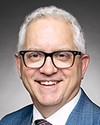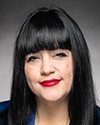Boozhoo. Hello. Bonjour.
Thank you so much to the committee for the opportunity to appear before you today.
The First Nations with Schools Collective is an inter-nation table made up of nine first nation communities in Ontario and growing. Each participating first nation has been administering their own schools—one from K-6, five from K-8, and two from K-12—for over the last three to four decades.
Many of those first first nation teachers back then became those first first nation principals, who then became those frontline leaders fighting for first nation school principal certification programs, first nation education institutes and indigenous teacher education programs. Those education leaders had the same goal back then as the FNWSC has today.
We want high-quality education systems that outperform provincial systems on a number of success indicators including revitalizing culture and graduation rates. This long-term change is clear evidence that self-determination results in positive student outcomes that have larger positive impacts many times over. Those leaders were community leaders, like you and I. They saw a gap and worked to fill it, pushed hard with willing partners.
It's time—the children began raising their voices in 2021. They are calling us to direct our attention to first nation children living right now, currently attending their home schools, our youngest generations. Our children have waited far too long, at much cost to them, for the adults, you and I, to ready ourselves to deliver on this promise.
The promise of UNDRIPA, signed in 2021, signalled Canada's intention to deliver on this promise: to find and push down the barriers to our children's freedom, according to article 14(1), to their right to a quality education, to their right to an education in their language and grounded in their culture, and to our responsibility as self-determining nations to provide it for them.
A 2023 goal of the collective therefore is to seek a legislated response for full and unfettered first nation control over first nation education, supported by a distinctions-based first nation education funding parity plus model. We have developed this model to take to a Canada-first nation table.
The funding model is led by first nations for first nations. Because of the long-standing historical, cultural and uniquely geopolitical circumstances that are first nation-Canada relations, provincial governments have no jurisdiction over our governing affairs as such, yet Canada has tied first nation education funding inextricably to provincial formulas beginning in 2019 with its interim funding approach.
We have done this work because we know that fair and equitable funding for first nation education systems in communities will have direct and immediate positive impacts on graduation rates and success outcomes. Here is why.
The means by which traditional knowledge is transferred, captured, stored and safe-guarded must evolve.
First nation life-long learning systems privilege learning about the people, their lifeways, histories and beliefs within a rich environment of love and caring. A curriculum is about our wellness, our goodness. It showcases what we want people to see about us—our community and our people.
Spiritual essence and kinship principles, their meanings and the place of these principles amongst all things learned must be re-established as a core tenet of a first nation curriculum. It is felt that these concepts are largely absent from learning these days, and learner well-being is dependent on knowing and embracing these key lifeway principles.
Communities must plan for learning in and on the homelands, no matter where community members are. First nation learners long to belong, learn, practice what it means to be Haudenosaunee, or Anishinabe in our case, on the lands that have constitutionally protected aboriginal rights, where aboriginal treaty rights and inherent rights exist.
Curriculum design is different for first nations. It involves researching, writing histories largely untold, in communities, with one another.
Curriculum design requires a robust space for continuous Haudenosaunee and Anishinabe critical thinking in the intellectual traditions of their peoples. Time to think and reflect on the teaching for curriculum development and implementation is needed, because knowledge transfer protocols are different from western ways of educating.
Time with elders to gather traditional knowledge is limited. The time is now to gather, record and pass along the traditions and knowledge. Therefore, emphasis on new teacher - adult learner supports in the transfer of knowledge about the ways of the people is of critical importance from the outset, all of which must be funded properly so that a high-quality education system, as we define it, can exist.
Because it's International Women's Day, I want to showcase the importance of language. Ikwe is the word for woman in Ojibwa. It is connected to the word aki, the Ojibwa word for earth. Both are life-givers. The word for old woman is mindimooyeh, which actually breaks down to “one who holds it all together”, which is the foundation of our most sacred governance structure, the family. Aki, the word for earth, is also rooted in the word for teacher, gekinoo'amaaged. It is the land that is our greatest teacher and our relation to her sits at the centre of these words.
Thank you.




